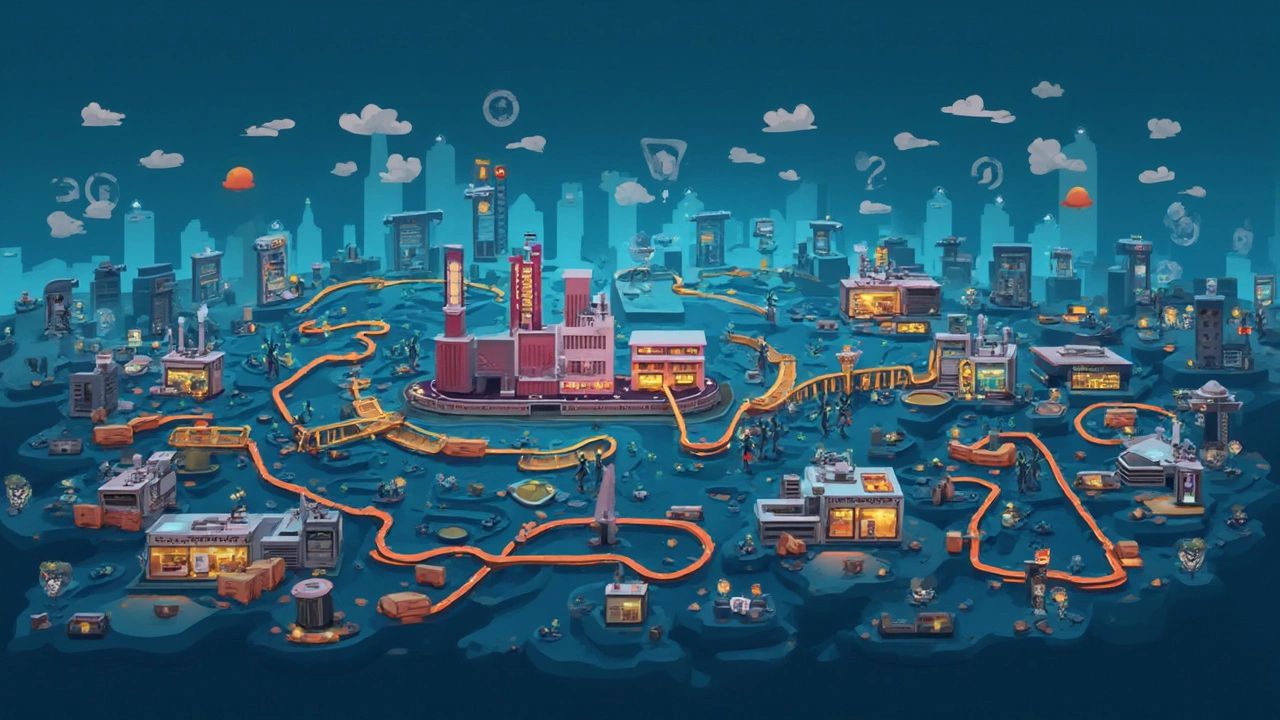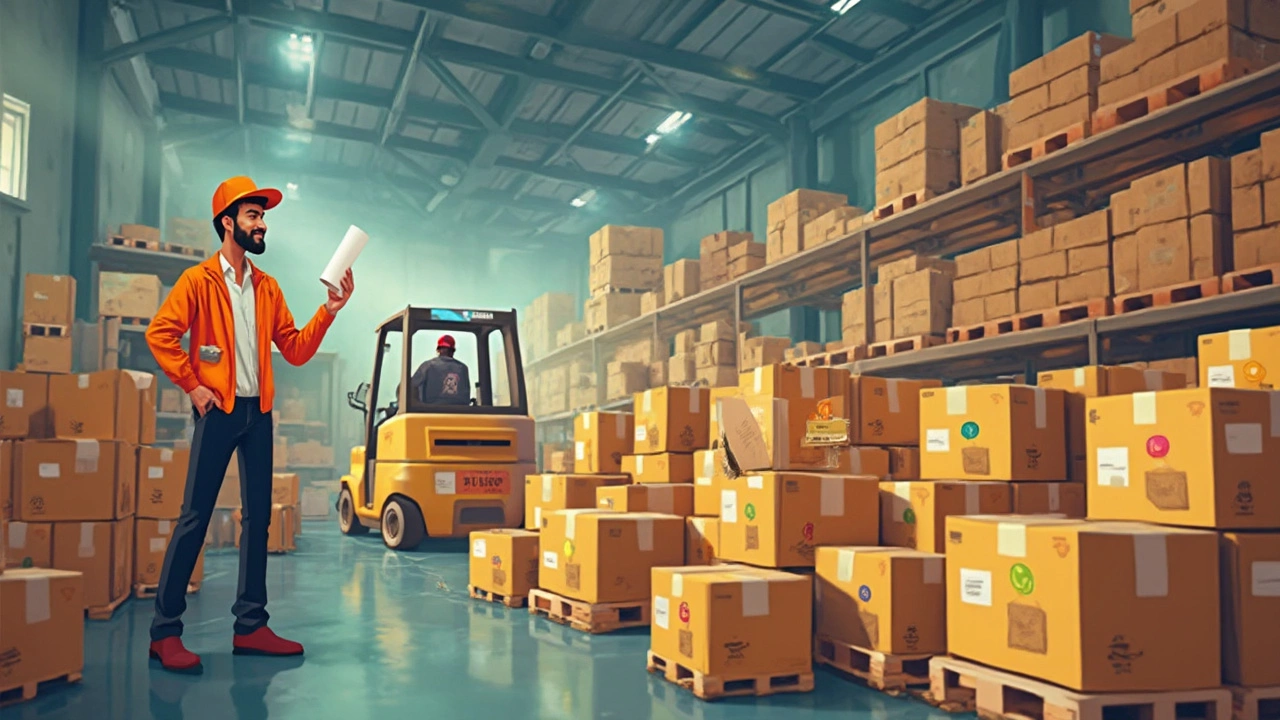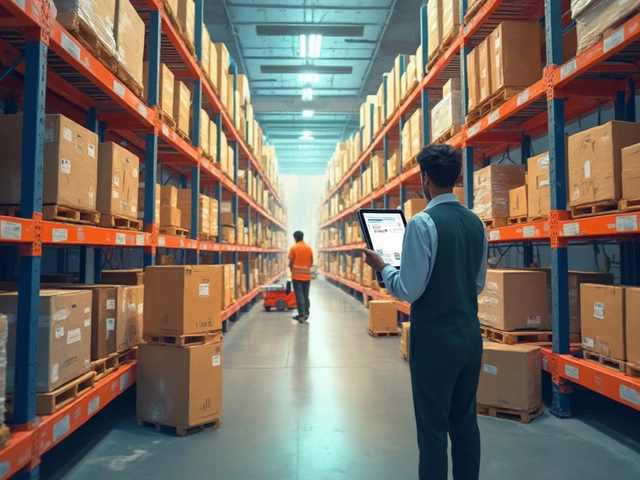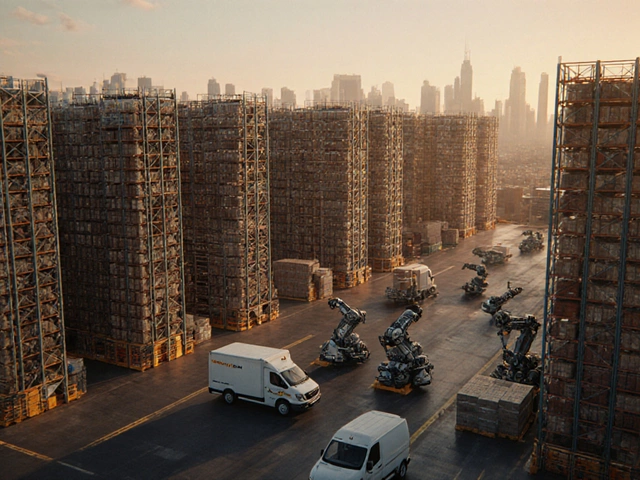Everyone thinks of logistics as just trucks, warehouses, or maybe the mad rush of holiday delivery drivers. But when you peel back the layers, logistics is a wild strategic game that affects pretty much everything you buy, eat, or touch daily. What separates top logistics operations from the rest? Five simple words: the 5 P's. Let’s dig into what they are, why they matter, and how they keep the modern world ticking—even when things get chaotic.
What Are the 5 P's of Logistics?
If you’ve ever wondered how your online order makes it from a factory in Vietnam to your doorstep in Texas in just three days, here’s the code behind the magic: Planning, Processes, People, Packaging, and Performance. These five P’s are the secret ingredients chefs use to serve up smooth supply chains and keep disruptions from turning global businesses into train wrecks.
5 P's of logistics isn't just a buzzword on a PowerPoint slide. It’s a practical checklist companies run through every day. Mess up one, and the whole system can unravel fast—think bare grocery shelves, late Amazon deliveries, or factories shutting down for lack of parts. Real-world logistics leaders use these five points to dodge disasters, cut costs, and keep customers happy.
- Planning: Not just what you’ll move, but when, where, how, and why. Good planning means less wasted space on freight, fewer delays, happier customers, and a fatter bottom line. UPS, for example, uses advanced algorithms to plan routes, cutting out millions of unnecessary miles each year.
- Processes: Imagine if every package had a different way it got handled. Total chaos. Streamlined, standardized processes—from order picking to loading to customs paperwork—make it possible to move billions of products without melting down.
- People: Robots are cool, but humans still run the show. It’s the people creating plans, solving problems, managing crises, and keeping everything glued together. In 2023, logistics companies offering better training and workplace culture saw a 27% drop in costly staff turnover compared to their competitors.
- Packaging: Not just about bubble wrap. Packaging must protect the goods, be efficient for loading, and sometimes even comply with laws across borders. Smarter packaging can save millions in damage and wasted space. FedEx once saved 15% in shipping costs on one route just by switching box designs.
- Performance: All the planning in the world doesn’t mean a thing unless you track and measure. Who’s delivering late? Are you overstocked? With the rise of analytics, companies can correct mistakes in real time and spot trends before they become nightmares.
These aren’t just academic ideas. They’re lived realities for industries like automotive, food, and e-commerce, where missing even one piece can cost millions.
The table below gives you a quick snapshot of how big companies leverage each “P” to gain an edge:
| Logistics P | Real-World Example | Impact / Result |
|---|---|---|
| Planning | Amazon route optimization | 20% faster deliveries |
| Processes | Toyota just-in-time inventory | Minimal storage costs, leaner operations |
| People | DHL training programs | 27% less turnover, happier teams |
| Packaging | IKEA flat-packs | Lower shipping costs, fewer damages |
| Performance | FedEx real-time tracking | Fewer lost packages, higher satisfaction |
If you’re curious why some companies never seem to miss a beat—while others always feel behind the eight ball—this is usually why.

Breaking Down Each P: Tactics, Insights, and Unexpected Twists
Planning isn’t a one-and-done exercise. It’s daily, sometimes hourly, and at high volume. When COVID hit, toilet paper didn’t run out because people used more; it ran out because factories and routes couldn’t adapt fast enough. Savvy logistics planners create “what-if” playbooks, so if a port in Shanghai closes, they already have a reroute ready. According to Statista, companies with advanced planning systems in 2024 were 45% more likely to hit delivery targets—even when global chaos struck.
With Processes, think of a smooth dance. Chaos in a warehouse doesn’t just look bad—it turns into expensive mistakes. Some outfits use wearable tech that tells workers where to walk or pick, shaving seconds (that add up to hours) from every shift. These little optimizations can mean millions saved every month. One global retailer revamped their picking process, dropping wrong-item shipments by 60% just by making sure processes were crystal clear.
Let’s talk People. While the media loves stories about automated trucks, a human with quick thinking can often dodge disasters a computer can’t predict—like sudden storms or strikes. All-star supply chain managers are famous for their “no problem too big” attitude, often juggling dozens of emergencies at once. Walmart’s logistics chiefs are on call 24/7, fixing issues like severe weather or surprise cyberattacks in real time, so stores don’t run empty.
Good Packaging is shockingly powerful. Think of perishable goods—ice cream, fresh flowers, vaccines. Without spot-on packaging, these melt, wilt, or spoil before they ever arrive. Smart companies use packaging that actively tracks temperature or senses damage, sending alerts before anything’s ruined. Regular shelf goods also get the packaging treatment: switching from round jars to square saves space, lets companies ship more at once, and even cuts carbon emissions by needing fewer trucks.
When we hear Performance, it sounds boring—until someone’s late with your birthday present. Good logistics teams set up dashboard after dashboard to watch on-time rates, breakdowns, and bottlenecks. They spot a drop in performance and move fast, like airlines scrambling to reroute planes during bad weather. Some food distributors now use AI-powered alerts to reroute perishable items if a delay threatens freshness, saving millions in food waste every year.
Fact: Logistics isn’t a “set it and forget it” industry. It’s non-stop, and missing any one P can mean trouble. According to Gartner, companies that monitor all five areas closely are 67% more profitable than those that wing it.

Tips, Tricks, and Game-Changers: How to Use the 5 P’s for Standout Logistics
You don’t need a billion-dollar budget to play like the big guys. Here are some actionable moves anyone can copy:
- Use checklists for Planning. If a shipment misses info—weight, customs codes, addresses—the whole chain can stall. A shared digital checklist kills these headaches fast.
- Standardize your Processes. Even startups can use barcode scanners or order-pick visuals to avoid rookie mistakes. One midsized gym equipment seller cut errors by 40% just by adding color-coded picking bins.
- Invest in your People. Don’t just train once—keep up with quick refreshers and open channels for frontline tips. A major grocery chain in Europe slashed accidents after launching a ‘share your idea’ program, boosting morale and saving money at the same time.
- Get creative with Packaging. Custom-fit boxes save serious cash when shipping odd shapes. A small candle shop went from half-empty boxes to snug, perfect-fit packaging and saved $30,000 annually on shipping—on just one product line.
- Track Performance religiously. Free or cheap tools now track deliveries, errors, and response times. Set up simple dashboards so teams see progress daily. Let’s face it: everyone works harder when the stats are right in their face.
Want to stand out? Mix automation with that human touch. The most successful logistics setups in 2025 aren’t just leaning into tech—they use it to empower humans, not sideline them. For example, major couriers now use AI routing but have dispatch teams ready to override when weather or traffic goes haywire.
For folks in charge of logistics—or anyone looking to break in—the real secret sauce is integrating these five points so nothing gets missed. Even in the wildest disasters (floods, cyber outages, new pandemic waves), these basics let you keep moving, adjust fast, and, honestly, sleep better at night knowing you’re prepared. The boring stuff? That’s the magic. Nail your 5 P’s, and you’ll be the one everyone wants to call when the big storm hits and products simply have to move.





